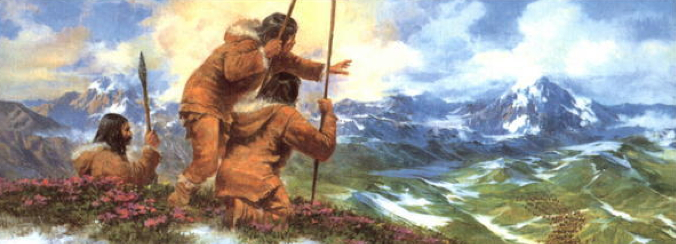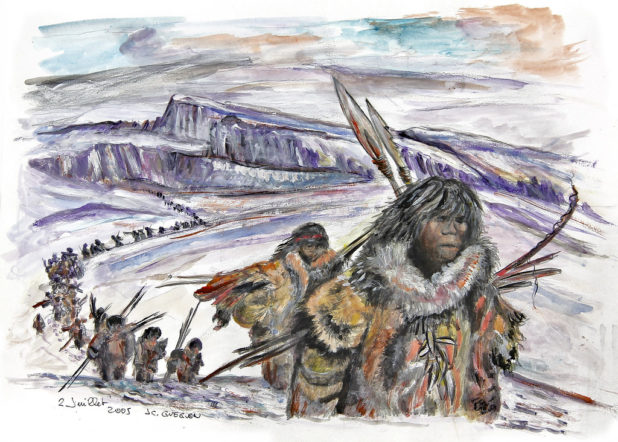I guess that they were just wrong about this the whole time.
I remember being taught this Arctic crossing theory of how the first humans came to America and it seemed a little fantastic to me at the time.
AFP:
Tools excavated from a cave in central Mexico are strong evidence that humans were living in North America at least 30,000 years ago, some 15,000 years earlier than previously thought, scientists said Wednesday.
Artefacts, including 1,900 stone tools, showed human occupation of the high-altitude Chiquihuite Cave over a roughly 20,000 year period, they reported in two studies, published in Nature.
“Our results provide new evidence for the antiquity of humans in the Americas,” Ciprian Ardelean, an archeologist at the Universidad Autonoma de Zacatecas and lead author of one of the studies, told AFP.
…
The saga of how and when Homo sapiens arrived in the Americas — the last major land mass to be populated by our species — is fiercly debated among experts, and the new findings will likely be contested.
“That happens every time that anybody finds sites older than 16,000 years — the first reaction is denial or hard acceptance,” said Ardelean, who first excavated the cave in 2012 but did not discover the oldest items until 2017.
Until recently, the widely accepted storyline was that the first humans to set foot in the Americas crossed a land bridge from present-day Russia to Alaska some 13,500 years ago and moved south through a corridor between two massive ice sheets.
Archeological evidence — including uniquely crafted spear points used to slay mammoths and other prehistoric megafauna — suggested this founding population, known as Clovis Culture, spread across North America, giving rise to distinct native American populations.
But the so-called Clovis-first model has fallen apart over the last two decades with the discovery of several ancient human settlements dating back two or three thousand years before earlier.
Moreover, the tool and weapon remnants at these sites were not the same, showing distinct origins.
“Clearly, people were in the Americas long before the development of Clovis technology in North America,” said Gruhn, an anthropology professor emerita at the University of Alberta, in commenting on the new findings.
In a second study, Lorena Becerra-Valdivia and Thomas Higham, researchers at the University of Oxford’s Radiocarbon Accelerator Unit, used radiocarbon — backed up by another technique based on luminescence — to date samples from 42 sites across North America.
Using a statistical model, they showed widespread human presence “before, during and immediately after the Last Glacial Maximum” (LGM), which lasted from 27,000 to 19,000 years ago.
The timing of this deep chill is crucial because it is widely agreed that humans migrating from Asia could not have penetrated the massive icesheets that covered much of the continent during this period.
I also remember being taught about the first cellular life spontaneously self-assembling around thermal vents in the ocean floor.
That also seemed pretty wild.
Now, years later, NASA says that maybe the first archeobacteria were seeded through asteroids.
What these scientists seem to be telling us, if we pay attention, is that they really have no idea about a lot things. They’re just making things up as they go along.


